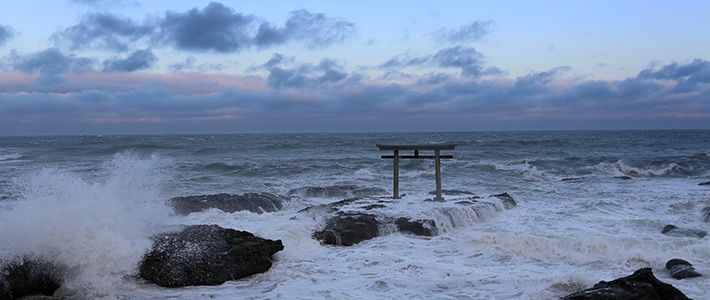
Insider’s Guide to Shintō Shrines
Torii: Gates to the Sacred Spaces
Guideto Japan
Culture- English
- 日本語
- 简体字
- 繁體字
- Français
- Español
- العربية
- Русский
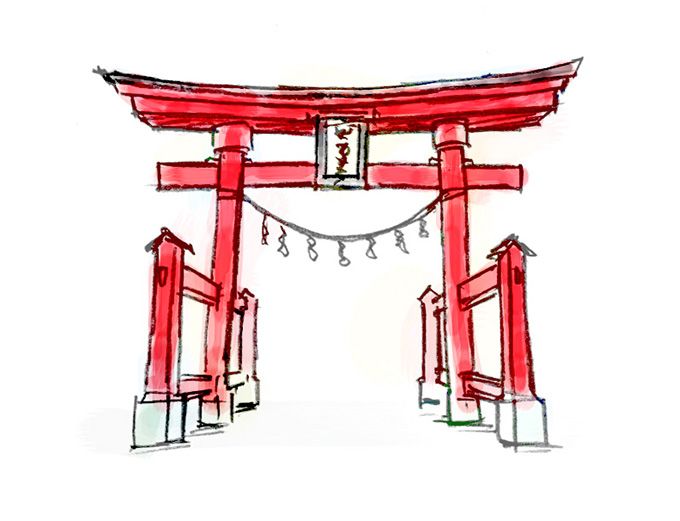
The torii is a gate that stands at the entrance to the sacred area around the shrine. The distinctive form of the torii is recognized by people around the world as an icon marking the presence of a Shintō shrine. This gate signals that you are about to enter hallowed space, and it is customary to bow one’s head before passing beneath it.
The size and number of the torii depend on the scale of the shrine. When a shrine has multiple torii, the outermost, situated at the entrance to the shrine precinct, is typically the largest. It is called ichi no torii, or first gate. Each subsequent gate (ni no torii, san no torii, etc.) marks a transition to ever more sacred space as one approaches the sanctuary.
The basic form of the torii is two posts topped by a lintel called the kasagi and joined by another horizontal member, the nuki, directly beneath the kasagi. Different lineages display their own variations on this theme, such as torii with a rudimentary roof (ryōbu torii) and triple-arched gates (miwa torii). The practice of painting the entire torii bright vermilion is limited to certain shrine lineages, and unpainted wood is typical of most lineages. Stone gates are not uncommon, and torii of metal, concrete, and fiber-reinforced plastic are on the rise.
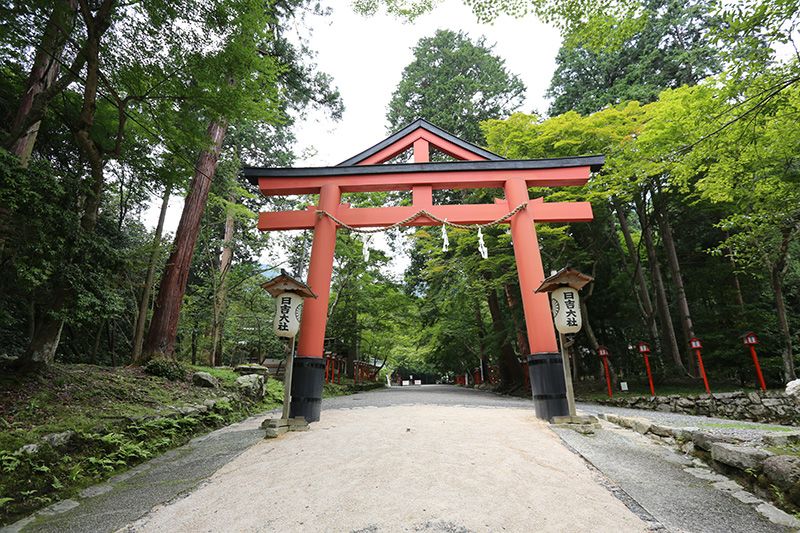 Hiyoshi Taisha, Ōtsu, Shiga Prefecture
Hiyoshi Taisha, Ōtsu, Shiga Prefecture
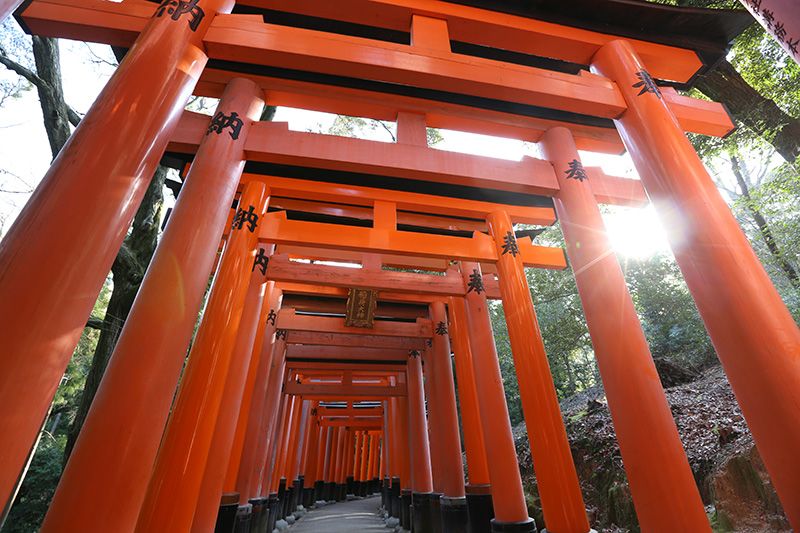 One of the famed torii arcades at Fushimi Inari Taisha, Kyoto
One of the famed torii arcades at Fushimi Inari Taisha, Kyoto
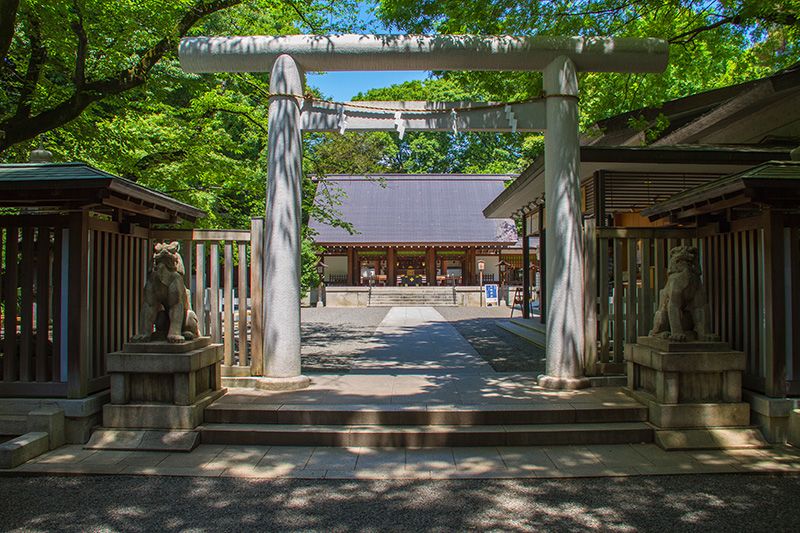 A stone torii at Nogi Shrine, Tokyo
A stone torii at Nogi Shrine, Tokyo
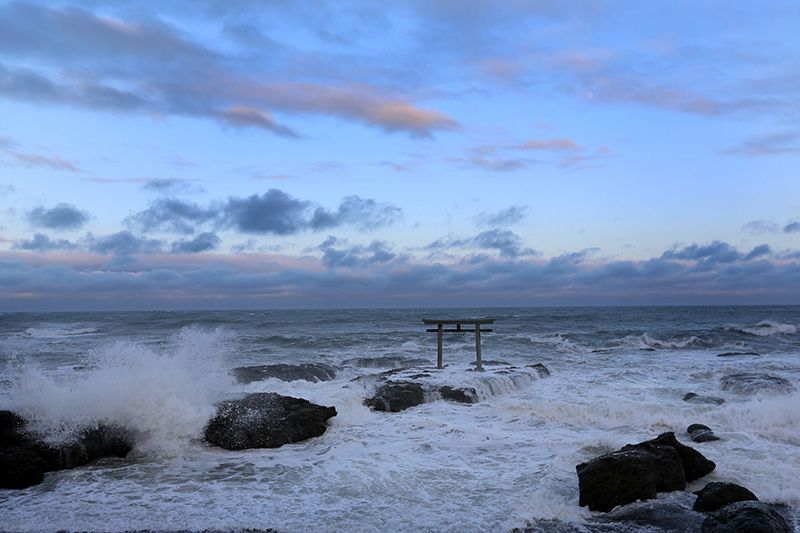 The Kamiiso torii at Ōarai Isosaki Shrine, Ibaraki Prefecture
The Kamiiso torii at Ōarai Isosaki Shrine, Ibaraki Prefecture
(Photo of Nogi Shrine by Nippon.com. All other photos by Nakano Haruo. Illustrations by Izuka Takeshi.)
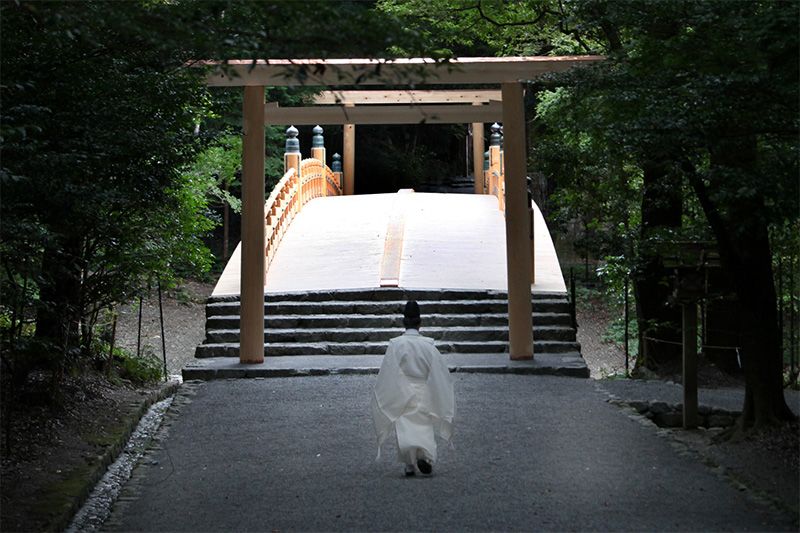
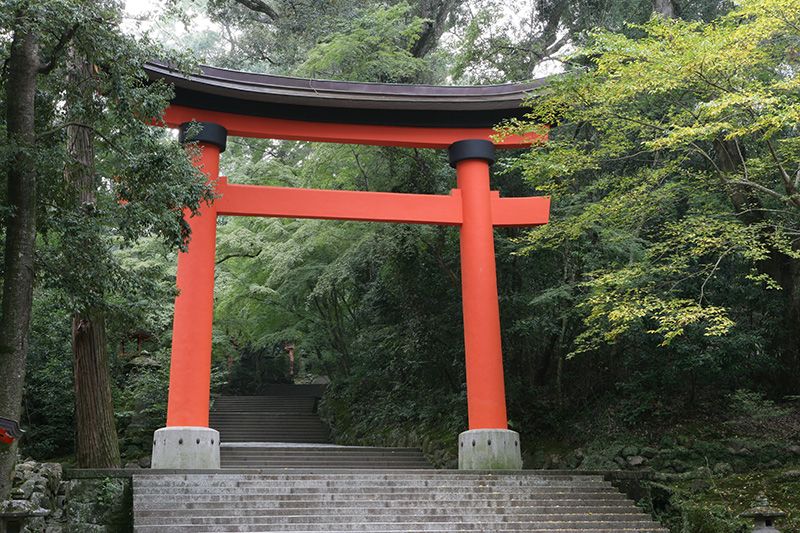
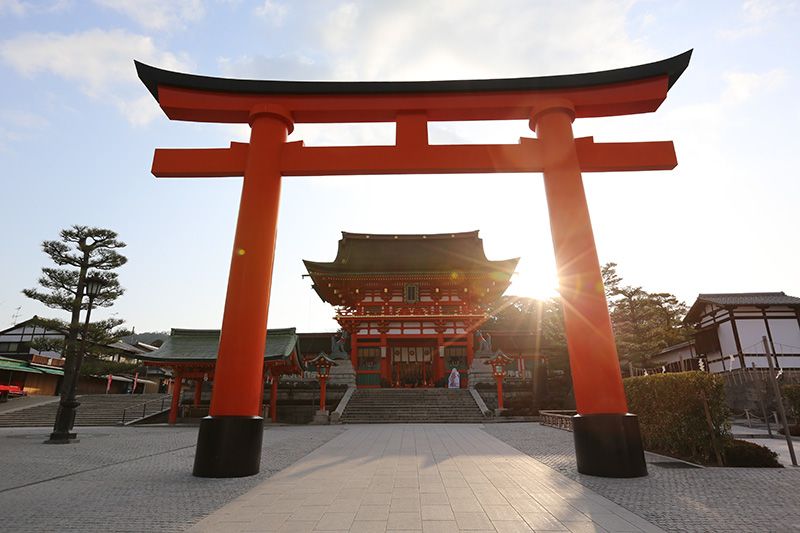
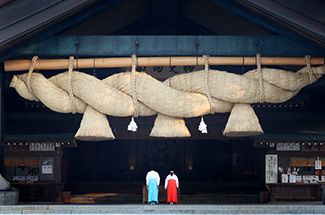 Your Virtual Guide to the Shintō Shrine
Your Virtual Guide to the Shintō Shrine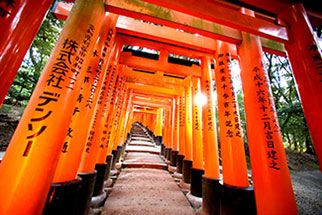 Foreign Tourists Flock to the Gates of Fushimi Inari Shrine
Foreign Tourists Flock to the Gates of Fushimi Inari Shrine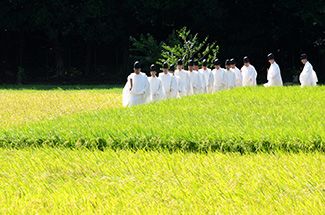 A Year in the Life of Ise Shrine (Photos)
A Year in the Life of Ise Shrine (Photos)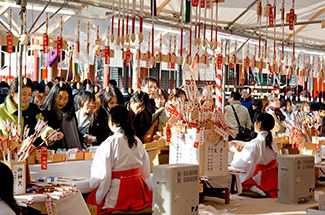 Japan’s Religious Ambivalence: The Shaping and Dismantling of a National Polity
Japan’s Religious Ambivalence: The Shaping and Dismantling of a National Polity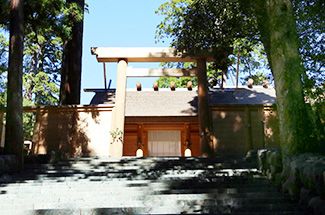 The Japanese World View: Three Keys to Understanding
The Japanese World View: Three Keys to Understanding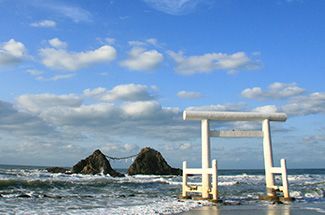 “Kami”: The Evolution of Japan’s Native Gods
“Kami”: The Evolution of Japan’s Native Gods